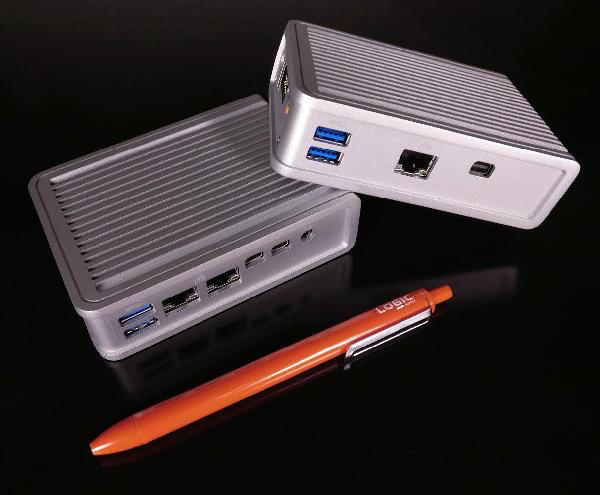Recent Posts
Ultra Small Form Factor IoT Device With Wi-Fi, Bluetooth And 4G Connectivity
Posted by on
 Global computer hardware manufacturer Logic Supply has announced their CL200 Ultra Small Form Factor computer, built to power innovation at the network's edge. Surrounded by an ultra-durable cast aluminum enclosure, and configurable with Wi-Fi, Bluetooth and 4G connectivity, the CL200 has been engineered to bring reliability to the Internet of Things.
Global computer hardware manufacturer Logic Supply has announced their CL200 Ultra Small Form Factor computer, built to power innovation at the network's edge. Surrounded by an ultra-durable cast aluminum enclosure, and configurable with Wi-Fi, Bluetooth and 4G connectivity, the CL200 has been engineered to bring reliability to the Internet of Things.
Both models in the CL200 Series are powered by an efficient Intel® Apollo Lake Celeron processor and measure a mere 83 x 116 x 34 mm. The base model CL200, running on Linux Ubuntu 16.04, features 1 GB of RAM and 8 GB of onboard storage. The CL210 steps up to 2 GB of RAM and 32 GB of storage, and can be configured with Ubuntu or Windows 10 IoT. A built-in MicroSD card slot on both models enables additional removable storage.
I/O on the CL200 includes one mini DisplayPort™ capable of 1080p or 4K resolution, one Gigabit LAN port, and two USB 3.0. The CL210 features two mini DisplayPorts capable of dual 1080p or single 4K resolution, dual Gigabit LAN, two USB 3.0 and also adds a 3.5 mm audio jack. Both systems have an additional USB 2.0 port and RS-232 box header on the bottom, and are configurable with Wi-Fi/Bluetooth and Logic Supply's Extrovert 4G LTE capability.
The aim of this book is to help you understand the technologies behind the devices used in the Internet Of Things. This is done with a mixture of theory, examples and 'war-stories'.
This book may be read by senior students, but it is more likely to be read by programmers and developers, who have done some programming of PC's in Windows or Linux, and are now faced with developing devices for the Internet Of Things.
Basic programming skills are thus assumed, whereas no prior knowledge on TCP/IP and Digital Signal Processing is needed.
Based on many years of experience as developer, university-teacher and manager, the author's personal view on best practices in the embedded world is offered.
- Part I introduces the main features of Embedded Operating Systems and modern highly integrated CPU's and thus builds the foundation for part II.
- Part II - on Internet Protocols and Digital Filters - is the main 'textbook'. It provides a lot of facts, backed up by examples. The many network cases are illustrated with the help of WireShark Captures. The chapter on digital filters is focused on making the reader understand the basics, without getting lost in formulas.
- Part III describes the authors experience with best practices when working with embedded networking. The author's experience as a developer, combined with his overview as manager, results in a pragmatic and highly usable set of guidelines.
One of the strongest features of this book is the many figures. They make the book inviting and helps the reader remember the knowledge given.
 Loading... Please wait...
Loading... Please wait...

